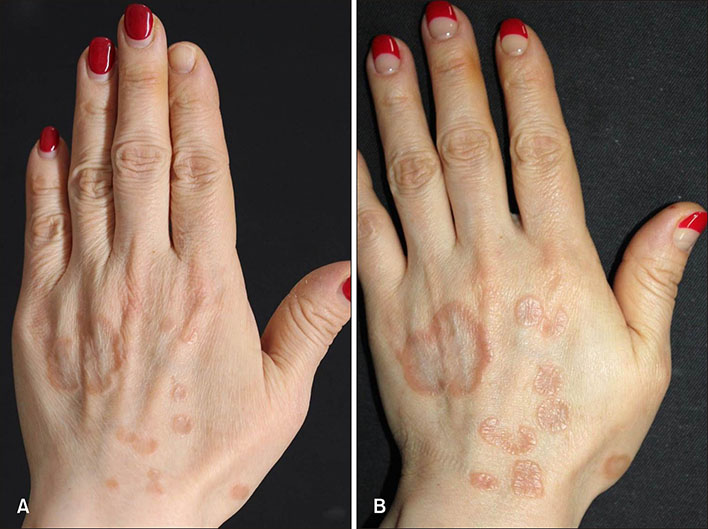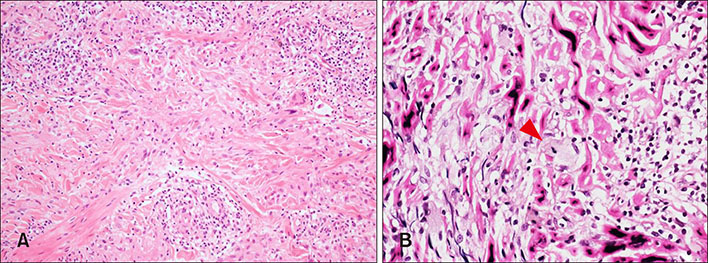Ann Dermatol.
2019 Aug;31(Suppl):S64-S65. 10.5021/ad.2019.31.S.S64.
Annular Elastolytic Giant Cell Granuloma: Chronic Heat Exposure, an Underestimated Factor
- Affiliations
-
- 1Department of Dermatology, Chung-Ang University College of Medicine, Seoul, Korea. drseo@cau.ac.kr
- KMID: 2456683
- DOI: http://doi.org/10.5021/ad.2019.31.S.S64
Abstract
- No abstract available.
Figure
Reference
-
1. Chen WT, Hsiao PF, Wu YH. Spectrum and clinical variants of giant cell elastolytic granuloma. Int J Dermatol. 2017; 56:738–745.
Article2. El-Khoury J, Kurban M, Abbas O. Elastophagocytosis: underlying mechanisms and associated cutaneous entities. J Am Acad Dermatol. 2014; 70:934–944.
Article3. Zacharias I, Nagy G, Orban I. [O'Brien's actinic granuloma]. Ann Dermatol Venereol. 1992; 119:137–138.4. Rasmussen DM, Wakim KG, Winkelmann RK. Isotonic and isometric thermal contraction of human dermis. II. Age-related changes. J Invest Dermatol. 1964; 43:341–348.
Article5. Fujimoto N, Akagi A, Tajima S. Expression of 67-kDa elastin receptor in annular elastolytic giant cell granuloma: elastin peptides induce monocyte-derived dendritic cells or macrophages to form granuloma in vitro. Exp Dermatol. 2004; 13:179–184.
Article
- Full Text Links
- Actions
-
Cited
- CITED
-
- Close
- Share
- Similar articles
-
- Annular Elastolytic Giant Cell Granuloma: Chronic Heat Exposure, an Underestimated Factor
- A Case of Palmar Annular Elastolytic Giant Cell Granuloma
- A Case of Papular Elastolytic Giant Cell Granuloma on the Knees
- A Case of Annular Elastolytic Giant Cell Granuloma Induced by Short Term Heat Exposure
- A Case of Annular Elastolytic Giant Cell Granuloma Occurring on Non-sun-exposed Skin



